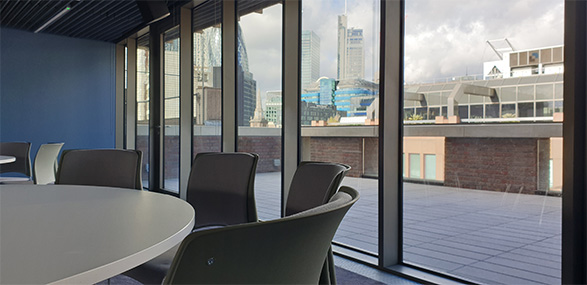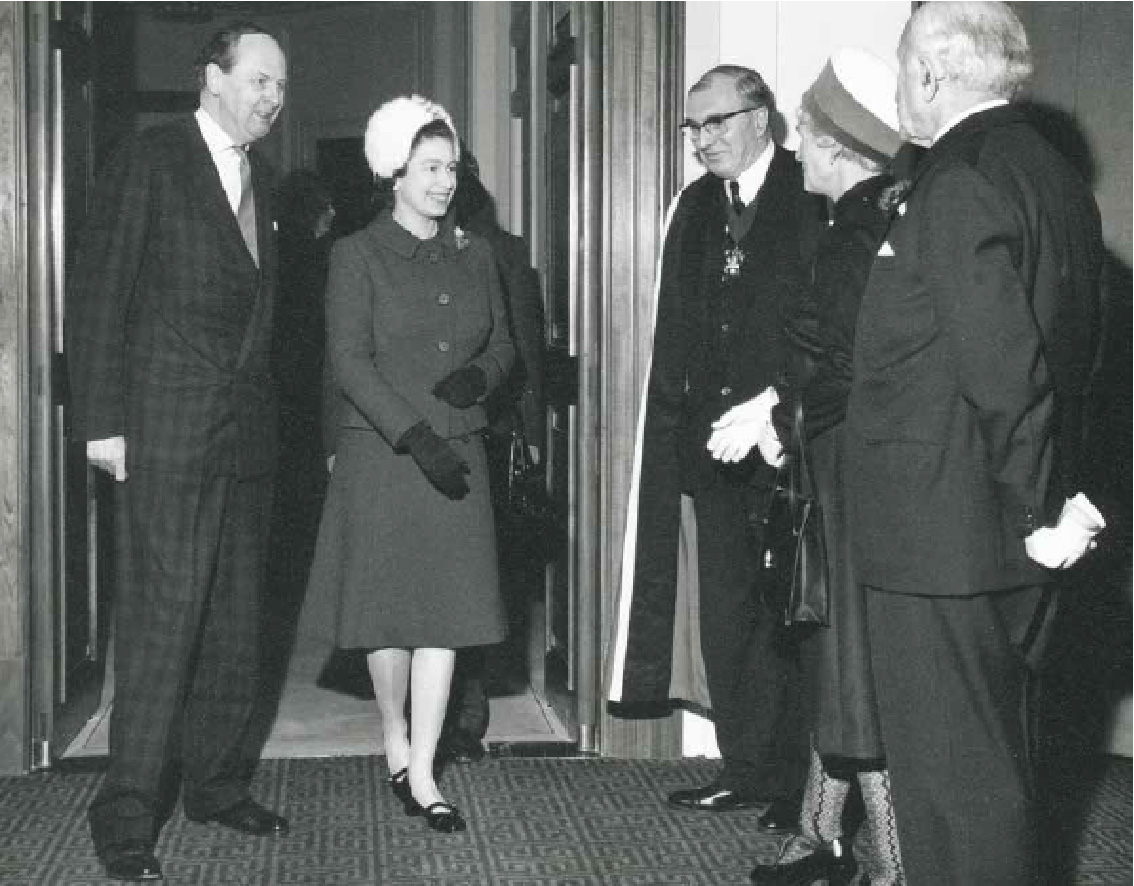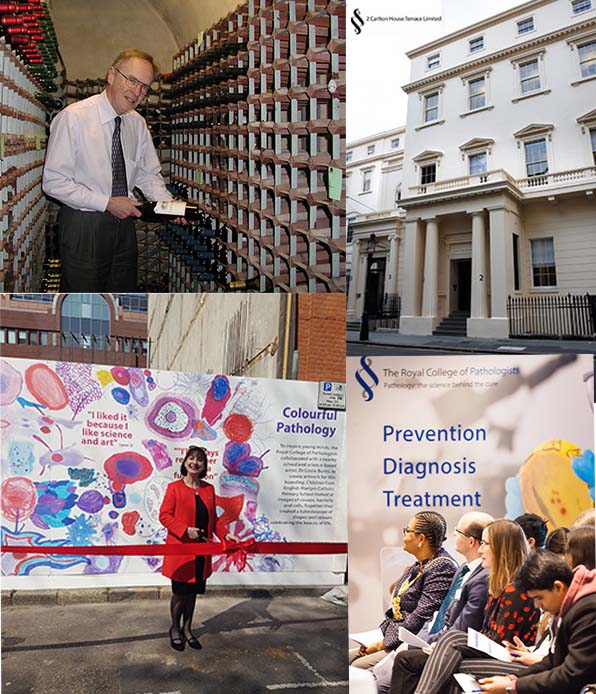
A fissiparous tendency
For centuries, regulation of the medical profession in England was vested in three bodies: the Royal College of Physicians (RCP), the Royal College of Surgeons and the Society of Apothecaries. These organisations, rooted in the 16th century, were created for the noble purpose of protecting patients from incompetent practitioners. They fulfilled this by setting standards for training and practice, and, until the Medical Act 1858 and the inception of the General Medical Council, issued licences to practise.1
As medicine grew in complexity, new specialties formed and sought their own representation separate from the ancient institutions. This led to the founding of the royal colleges of Obstetricians and Gynaecologists in 1929 and of General Practitioners in 1952. Commenting on the inauguration of the College of Pathologists in 1962, an editorial in The Lancet attributed this collegiate evolution to the medical profession’s ‘fissiparous tendency’.2
Pressure for stronger collegiate representation of pathologists was the inevitable consequence of the specialty’s growth during the 20th century. In 1938/1939 approximately 85 pathologists were practising in England, Scotland and Wales.3 By 1960, this had risen to 725 pathologists, a growth rate far exceeding that of physicians, surgeons or gynaecologists.3 Many of these pathologists saw themselves as physicianly specialists and, if they had affiliation with a medical royal college, it was with the RCP. In 1948, that college had created a Committee on Pathology and in 1951, in collaboration with the Royal College of Surgeons, it launched the Conjoint Diploma in Pathology.
Many pathologists remained discontent with their representation by the RCP. Their choice was either to negotiate a stronger role in the RCP, a large organisation already prominent in the medical landscape, or to succumb to the fissiparous tendency and strive boldly to create a new college solely for their specialty.4
The pathologists’ house
Pathologists wanted professional parity with physicians and surgeons. They regarded the Conjoint Diploma as inferior to MRCP, branding them as ‘sub-consultants’. But even MRCP would not entitle them to any role in the governance of the physicians’ college, a privilege reserved for its fellows.
The notion of a pathologists’ college was advanced mainly by the Association of Clinical Pathologists (ACP), initially through a committee chaired by Professor Gordon Hadfield. A particularly influential submission to Hadfield came from five Sheffield pathologists — Eddie Blackburn, John Colquhoun, John Edwards, Arthur Jordan and Cecil Paine — who argued strongly for the establishment of a separate body to represent their specialty, crucially to ‘have their own house and be masters in it’. Nevertheless, guided by Hadfield’s report, the ACP voted in 1955 against the formation of a college and instead negotiated with the RCP for a pathology credential with the same status as MRCP. However, the concept of a pathologists’ college wasn’t dormant for long.
Worried by the prospect of the secession of pathologists, the RCP proposed a Faculty of Pathology with a high degree of autonomy, including an MRCP-equivalent examination and eligibility for FRCP on the same terms as existing members. This offer was not sufficiently seductive for many pathologists, who continued to campaign for their own college. In 1958, an ACP working party chaired by Professor George Cunningham made proposals for a college and the steps to establish it. These were supported by 69% of ACP members. Although the Pathological Society of Great Britain and Ireland, or at least its committee, was unenthusiastic initially about a college, it acknowledged that the specialty was heading in that direction, albeit hesitatingly, and decided eventually to collaborate with the ACP. 5
These events culminated in the founding of the College of Pathologists on 21 June 1962 at a meeting attended by approximately 300 subscribers representing the Pathological Society and the ACP. Sir Roy Cameron, FRS, was elected as President.6 Founder membership with an entry fee of £50 was offered to consultants and those becoming consultants in the ensuing three years.
Collapse of the curtain rail
Nomadic in its early years, the College’s first home was an office rented from the British Red Cross Society at 12 Grosvenor Crescent, London. In 1965, then with almost 2,000 members, the College leased three rooms from the Royal Society of Medicine in Chandos House, Queen Anne Street. The lease was non-renewable, so the College moved temporarily again to accommodation at 16 Park Crescent.
Around this time, Sir Michael Sobell, Chairman of GEC (Radio and Television) Ltd., offered a substantial donation to the British Empire Cancer Campaign. Fortuitously, the College’s Registrar, Theo Crawford, was also the Campaign’s Scientific Secretary. He suggested that the donation might be made jointly to the Campaign, which also needed new premises, and the College. Sir Michael agreed and within a year a suitable building — 2 Carlton House Terrace — became available on a 99-year lease from the Crown Commissioners. Bombed in October 1940, the building was then being reconstructed but, by June 1970, it was ready for the College’s arrival.
Having been granted a Royal Charter in February 1970, the Royal College of Pathologists’ premises at 2 Carlton House Terrace were formally opened by Her Majesty the Queen (who continues to be the College’s patron) on 10 December 1970. After customary speeches and tea in the library, she proceeded to unveil the commemorative plaque, ‘doing it with such vigour that the whole curtain and curtain rail collapsed’!7 This prestigious building was to be the College’s headquarters for over 40 years.
A major refurbishment, generously supported by a donation from the Pathological Society, was undertaken in the early 1990s. This was followed in 2007 by the creation of an education centre, to which many College members contributed, in the lower ground floor formerly occupied by Cancer Research UK. Concurrently, meeting rooms on the ground and first floors were modernised with improved audiovisual facilities. During this work, College staff spent six months in rented upper floors of an airless office block near King’s Cross.

Eastward bound
In 2012, Crown Estates decided to allow residential use of Carlton House Terrace. Given that 2 Carlton House Terrace was increasingly cramped and not suitable for conferences of a commercially viable size, it was decided to capitalise on the remaining 56 years of the lease, which would have continued to depreciate. The sale was agreed in 2014 and the College was given six months to relocate. Greatly missed would be the enviable view of Big Ben from the desks of the Professional Standards team.
The College moved from 2 Carlton House Terrace over a weekend to 21 Prescot Street, Whitechapel, in February 2015. This vast office block is home to the Royal College of Psychiatrists. We rented the entire fourth floor of the building until the end of 2018.
For College officers, this relocation was simply a matter of consulting a London Underground map to find the best route to their new destination. For the employed College staff, however, this was a huge wrench. They were required to move from characterful premises in the heart of London to an office on the edge of the financial district. But most made the best of the change now the entire College was on one floor. Unfortunately, academic activities were curtailed and some larger meetings, such as Trustee Board, Council and New Fellows admission ceremonies, necessitated hiring off-site facilities.
New permanent premises were soon found at 6 Alie Street, just a few hundred yards from Prescot Street. The site needed rebuilding from the ground up. This was completed in 2018. Our new headquarters was designed with respect for the environment in its configuration and use of materials. There are public areas on the first three floors. The sixth floor, which is set back from the main facade at the front and back, has roof terraces on both sides and is used as a meeting and function room. When not in use by the College, these spaces help generate income as a venue for academic conferences, product launches and private functions under the brand of Events @ No 6, owned by the College. The College hopes to realise this potential more fully as we return to face-to-face meetings after the pandemic. This has increased our visibility and has contributed to recognition by awards such as the Hire Space Awards – Best Newcomer 2019 and The RIBA Regional Award 2021.
Form and function
The College’s new building efficiently centralises the organisation’s core functions. While its imposing architecture may have symbolic significance for our professional status, it is much less important than the work conducted behind the facade. The College is the professional membership, not a building. They rightly judge it on the functions delivered in that building for the benefit of pathology, ultimately for patients and the public.
Like other medical royal colleges, the Royal College of Pathologists has become a much more patient-centred organisation, reflecting the need for continued compliance with Charity Commission requirements. There is now highly valued involvement of a variety of lay representatives who bring much-needed skills and a fresh perspective to strengthen accountability and ensure the College fulfils its charitable mission. There is influential lay advice to a wide variety of committees, including Council and Trustee Board, the latter now having a lay chair.
Accountability to the profession has benefited since 2014 from the election of honorary officers by the entire membership rather than only by Council. Each of the UK nations is now represented on Trustee Board as well as Council. However, there remains work to be done to ensure both these bodies reflect the diversity of the membership.
Issues may change, but the agenda does not. Our core business is learning, in all its forms, together with professionalism and communications. Learning encompasses undergraduate training, specialty curricula and lifelong education. Our educational standards are recognised and approved by regulatory bodies such as the GMC, as evidence of specialist training and competence.
Professionalism is the fundamental ethos of medical royal colleges. We achieve this with a framework for quality improvement, patient safety and best practice. The College also strives to ensure that the contribution of pathology to patient pathways remains relevant and recognised. There is coordination with the NHS in all four UK administrations in respect of workforce planning and development.
Work on communications and public engagement ensures that the College remains a recognised stakeholder in national discussions on healthcare policy. We have nearly 12,000 members, with approximately a quarter working outside the UK. The College conducts examinations internationally and works with kindred organisations worldwide to support all our members’ activities wherever they work.

Top left: Professor Sir James Underwood in the College's wine cellar at 2 Carlton House Terrace.
Top right: The College's premises at 2 Carlton House Terrace.
Bottom left: Past President Dr Suzy Lishman CBE at the Hoardings Launch of 6 Alie Street in 2017.
Bottom right: Hosting a public engagement event for National Pathology Week 2019 in the Elizabeth Room at 6 Alie Street.
Relevance, effectiveness and visibility
The College’s destiny and prosperity depend on maintaining its relevance, effectiveness and visibility. The last of these is supremely important. The medical royal colleges are approved as charities because their work is for the public benefit. Consequently, through National Pathology Week and other initiatives, the College does much to improve public awareness of the role of pathology specialists in patient care. The College also has increasing relevance by ensuring governments, the healthcare professions and the public can trust and rely on its authoritative advice.
In contrast to its neutrality before the College’s formation, the Pathological Society is now fully engaged with other specialty societies in advising on the College’s policies and strategies, particularly with regards to the academic aspects of the College’s mission. Other bodies share both our interests and our premises, notably the British Division of the International Academy of Pathology and the Faculty of Clinical Informatics. There are also close relationships with the Association for Clinical Biochemistry and Laboratory Medicine and the ACP, both of which predate the College.
Regardless of the medical profession’s fissiparous tendency, the work of our College and of all medical royal colleges is underpinned by the historic mission to serve patients by maintaining the high professional standards of those who contribute to their care.


